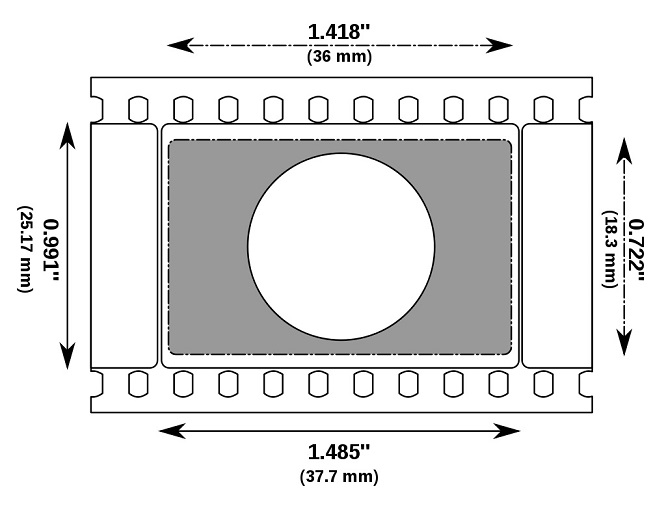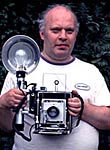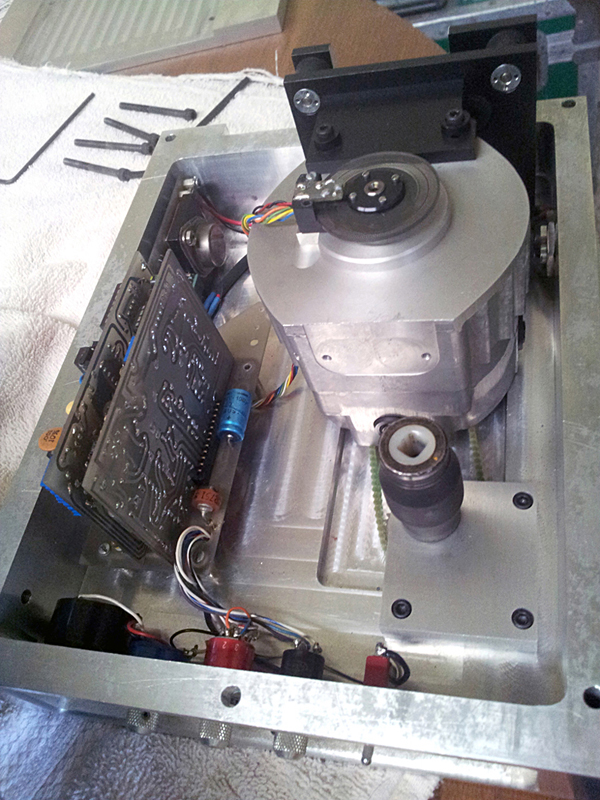|
|
This topic comprises 3 pages: 1 2 3
|
|
Author
|
Topic: Century's Vistavision and Cinerama
|
|
|
|
|
|
|
Frank Angel
Film God

Posts: 5305
From: Brooklyn NY USA
Registered: Dec 1999
|
 posted 07-03-2014 03:02 AM
posted 07-03-2014 03:02 AM





What I never could figure out was, once a film was shot in VV, why didn't Paramount just extract the widest image from the 2:35:1 area or even just 2:1ar of the negative and optically convert it to standard 2.335:1 ar anamorphic release prints so it could be shown as a full scope image. THE TEN COMMANDMENTS could have looked even more impressive in Technicolor Scope.
They would have been getting more negative geography that shooting in 35mm anamorphic giving them a very sharp scope image rivaling anything that Scope shot in 35mm anamorphic could produce, what with all the "cirles of confusion" anamorphic lenses produced. Fox knew it -- filming CAROUSEL and THE KING AND I in CinemaScope 55mm only to discover that the larger negative produced such a superior image when optically reduction printed to anamophic 35mm, that they just dumped the whole idea of converting theatre projectors to run 55mm prints and just ran the optically converted 35mm anamporphic prints instead and everyone was thrilled -- Fox, because it did away with that whole nightmare of some theatres converted while other not and double inventory prints, etc., and the exhibitors because they didn't have to do ANYthing, did have to spend a dime, which always makes them salivate like Pavlov's dogs.
Then again, I guess there WAS that "my wide screen system is better then your wide screen system" pissing contest thing going on between Paramount and Fox. Paramount simply was not going to give in to Fox and admit that CinemaScope was way ahead of the curve when it came to the number of screens already equipped to show anamorphic prints, regardless of the quality as compaired to spherical VV. But Paramount remained adamant about the fact that their VV process for wide screen was a superior system to CinemaScope, and while that may be true from a purely technical standpoint, Fox had already won the battle by the most significant and prize winning fact that the CinemaScope system was backward compatible and could play both the existing formats and the Scope format. This was music to exhibitors ears, and rightfully so; can you imagine what it must have sounded like to exhibitors when they heard that to run a VV film, the projectors had to be turned on their sides?
That said, I think the Paramount techs could have come up with a solution to that problem which might have saved VistaVision from going under so fast. Surely there could have been a way VV projectors to be outfitted with an adaptor/prism & mirror system that could flip a standard picture on its side, i.e., it could run BOTH VV prints and standard, vertical prints, both flat and scope -- a truly triformat projector, and everyone's happy, except for the film which had to make those two bloody painful twists to get the image to turn sideways into the head...ouch.
I mean you can understand how Paramount just couldn't swallow its pride and give up on its system like Warner and the other studios did. I remember running MR. ROBERTS (WB) and though how it must have galled Jack Warner. Evidently in order to use the word CinemaScope in the film TITLE credits -- it had to take up its own frame with the CinemaScope logo big a point size as the film Title, but it also had to have under the CinemaScope graphic in smaller font but very visible nonetheless, the credit "CinemaScope is a registered Trademark of 20th Century Fox" I bet he had to get drunk before he signed that agreement. But that's how big CinemaScope was in those heady first days -- every scope title had the CinemaScope logo as big or nearly as big as the film title -- in ads, on all 1-Sheets and on the screen. In Fox titles the CinemaScope graphic is part of the Fox logo fanfare and so it is ABOVE the title and the stars. Imagine!
| IP: Logged
|
|
|
|
|
|
|
|
|
|
|
|
|
|
|
|
|
|
Steve Matz
Jedi Master Film Handler
Posts: 672
From: Billings, Montana, USA
Registered: Sep 2003
|
 posted 07-04-2014 12:01 PM
posted 07-04-2014 12:01 PM




quote: Stephen Furley
I think six Kalee Vistavision machines were built, with four, two pairs, actually installed in cinemas. I don't know how many Century machines were built.
Battle of the River Plate was shown at the Odeon Leicester Square in London, and I think about two other films, but I can't remember which titles, in the two cinemas in London which were equipped. As a release format it existed to a slightly greater extant than the proposed 55.625 mm six-perf format for Cinemascope 55, but not by much.
Here is the Projection Booth of London's ODEON in the late 50's
with the 2 Vista Vision Projectors(one on each end) plus 3 other projectors. That has to be a rarity in Single Screen Theaters back in the day to have 5 Projectors in a Booth. Most theaters had two,sometimes 3, I have never been in a Booth that ever had more than 3(excluding Multplexes) ![[Eek!]](eek.gif)


| IP: Logged
|
|
|
|
|
|
|
|
All times are Central (GMT -6:00)
|
This topic comprises 3 pages: 1 2 3
|
Powered by Infopop Corporation
UBB.classicTM
6.3.1.2
The Film-Tech Forums are designed for various members related to the cinema industry to express their opinions, viewpoints and testimonials on various products, services and events based upon speculation, personal knowledge and factual information through use, therefore all views represented here allow no liability upon the publishers of this web site and the owners of said views assume no liability for any ill will resulting from these postings. The posts made here are for educational as well as entertainment purposes and as such anyone viewing this portion of the website must accept these views as statements of the author of that opinion
and agrees to release the authors from any and all liability.
|

 Home
Home
 Products
Products
 Store
Store
 Forum
Forum
 Warehouse
Warehouse
 Contact Us
Contact Us




 Printer-friendly view of this topic
Printer-friendly view of this topic



















![[Eek!]](eek.gif)






